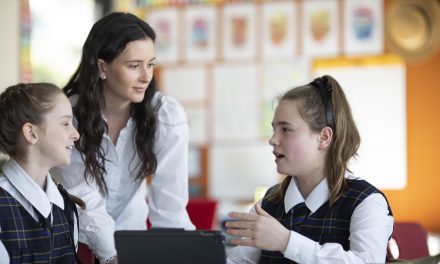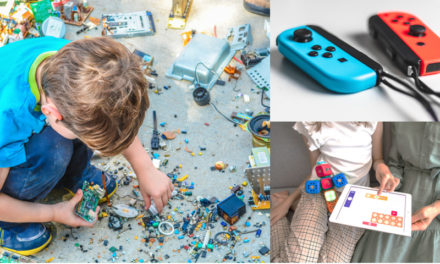From the beginning of life a very young baby responds to the facial expressions and ‘baby talk’ from loving parents. This is the start of ‘conversation’ and from this; the fundamentals of human interaction and the development of language are underway.
Barbara Yee
Conversation satisfies emotional and social needs in us all as well as being a pathway for human growth and development. However, children must have good doses of both speaking and listening. Conversation provides children with the opportunities to practice both in a meaningful and realistic context based on mutual respect for what each other is saying.
Literacy underpins all areas of formal learning achievement and if we want our children to excel academically, mastering conversational skills is not a bad place to start! At Corpus Christi, we believe the skills of speaking and listening are intrinsic to whole language development and we strive to provide a range of opportunities for children to be explicitly taught these skills.
So if good conversation is the start of the communication process, how can parents help?
The art of conversation is one area that can be neglected in the business of everyday family life. As busy parents we can fall into the trap of allowing our communication to mostly be comprised of instructional language – you know how it happens: unpack your bag, finish your homework, turn of the TV, brush your teeth. Instructional communication runs the risk of not requiring a response, being ignored, or turned into a less-than-friendly exchange. Don’t get me wrong, households need good management and instructional interaction achieves that. However, if that comprises the majority of all the interaction children have with their care-givers, there is little added to their overall language development.
Good conversation may not be happening because of the distractors that prevent good conversation getting underway. Those distractors may include a range of technological devices, particularly the mobile phone. It is ironic that an era where it is easy to keep in touch with anyone everywhere, we have less time for quality interaction and good conversation than ever!
Intrinsic to good conversation is the art of listening. Today this is often termed ‘active listening’. Another way of describing that is when you make a conscious effort to listen and then to keep on listening. Children know instantly when that stops – and you become a distracted listener. They too, will disengage from the process. Intentional or deliberate listening, when modelled by parents, ensures children value being listened to and they in turn are more likely to become good at listening. It is the aspect of conversation that requires the most practice.
The car trip home after school may seem for many an opportunity to start a conversation about the events of the day but with weary children and many potential distractions, it is no wonder that the attempts at conversation are not that fulfilling. Consider a quiet conversation after the children are fed and relaxed that starts with a simple ‘tell me about something in your day today’. This approach opens the possibilities for the children to take some control of the conversation, allows parents to buy in, reduces the pressure on children and is more likely to involve both sides speaking and listening.
If you want to know what your children are thinking, you have to encourage good talking time to be part of everyday life. So try to find the time or make the time for a chat.
*Barbara Yee is the Principal of Corpus Christi Catholic Primary School, St Ives












